#ruvuma
Explore tagged Tumblr posts
Text
FGX-12 Composite Dry Coal Separator Used in Coal Deshaling & Coal Beneficiation
In some open pit coal mine area, around 30-50% stones and gangue is mixed in raw coal during coal mining, thus,that removing stone & gangue ahead of time from raw coal is the first work before coal beneficiation,intelligent FGX12 dry coal separator developed by Tangshan Diro Technology can remove around 98% gangue & stone or more, separating efficiency is upto 95%, Erro Possible is around 0.1-0.16, the clean coal content in reject is 2%.

1.Our customers can choose to sell clean coal directly or supply to power plant to make great economic benefit,this is worthy of investment for low rank coal.
For some low rank coal like lignite,and long flame coal etc,this is the most optimal way to invest in economic cost and benefit,due to 1/4 investment cost of cost washery. Specially for lignite, there is no slime produced during production,thus the relevant cost like slime processing,storage,and transportation is all saved.
2. Some customers will feed clean coal to coal washing preparation plant for further processing.
1)Sharply reduce water & processing cost,cause the reject and stone is removed ahead of time;
2)Save transportation cost.
3) Moreover,that dry coal pre-preparation of raw material, reduce un-efficient processing of raw materials, the gangue and stone does not participating in coal washery;
4)Capacity of raw coal washery is reduced, reduce abrasion of equipments.
We roughly figure out the cost, if install our FGX-12 dry coal separation plant before coal washery,capacity is 120-150tph,then can help users save around $ 1100000/a. So, we advocate coal mines and power plant to design a scientific complete coal beneficiation plant,consider more economic value,reduce cost and loss, create more economic benefit.Tangshan Diro Technology are pragmatic,reliable and for offer our customer with optimal and washibility plant.

History of FGX composit dry coal separator
We have 34 years experience to process coal in dry way,DIRO designed FGX-1 dry coal separator initally for dry coal deshaling & coal preparation in 1989, the separating efficiency is 92%, erro possible is around 0.1~0.2. So, FGX composite dry coal separator is widely installed in arid and cold area in west northern part of China.

Why DIRO developed FGX-1 dry coal separator in 1989?
FGX series compound dry coal separator is widely installed in arid and cold area in west northern part of China, like Shann'xi,Shanxi,Inner Mongolia and Xinjiang province,cause this area is covered by MuUs Desert,be shortage of water;most importantly, coal mines & power plants are lack of investment capital in 1980's-2000's China.That quickly change the coal stream recource into the money is a intially idea, if cost is lower than coal washing plant,that is perfect. Thus, our engineers were working to design FGX-1 dry coal separator to solve two problems:
1. dry coal deshaling
2. coal beneficiation in dry method, has less effect on tempreture & weather situation

I was bore and grew up in Yulin city,Shann'xi,which coal reserves is 29.097 billion tons,it accounts for 1/3 of China's coal. The fast development of coal mining and dry coal preparation technology & coal washing tech in China, promoting the area development.
During development of 34 years,our FGX & FX dry coal preparation plant are assembled in Russia,Ukrain & Poland, the whole coal beneficiation plant is not affected on cold weather & lower tempreture conditions. In Gobi desert area in Mongolia, and South Africa, water is a problem,then this technology is assembled to solve the water problem of coal preparation, our FX series dry coal preparation,separating efficiency is upto 95%.
Please #check my website for more info:www.fxdrycoalprep.com
whatsapp:+8613730503881
#coal#dry air separator#dry coal processing#dry coal separation#dry coal washing#fgxseptech#tangshan diro technology#diro dry coal separator#dry coal separator#dry coal preparation#dry coal cleaning#dry air sorting#dry air vibrating separator#dry coal sorting#fgx dry coal separator#coal washing plant#coal beneficiation#coal washing project#coal washery#coal machinery#coal sorting machine#tanzania#mongolia#russia#south africa#africa#tancoal#ruvuma coal
1 note
·
View note
Text
Oyster Nut: Ethnobotanical Insights from Northern Tanzania

Abstract
Telfairia pedata (Sims) Hook is an important native climber plant commonly grown in East Africa. It bears nuts which are eaten either raw or cooked and is consumed mostly by expectant mothers, and as cooking oil. The survey was conducted between September 2019 to February 2020 in Sambaa, Meru, and Pare communities of Lushoto, Bumbuli, Arumeru and Same Districts, Northern Tanzania to assess the ethnobotany of T. pedata from a sample of 346 respondents using semi-structured questionnaires. Results indicate that, 21% of respondents used T. pedata for cooking with other staple foods while 18% claimed that the nuts are used by pregnant and lactating mothers for medicinal and breast milk stimulation and nine (9) percent indicated that the nuts are used for cultural and ritual purposes. Despite its importance, the cultivation of T. pedata in the study area is declining and the gap why such decline is experienced needs to be answered in further studies. Secondly, respondents within the 36-50 age groups reported the greatest diversity of uses of T. pedata 51% compared with those aged below 36 years old 21% signifying that the traditional knowledge known by younger aged groups may be declining. Thus, this gap of traditional knowledge between the groups should be addressed in order to improve utilization and conservation of this seriously declining yet important nut in the study area and other places of Tanzania.
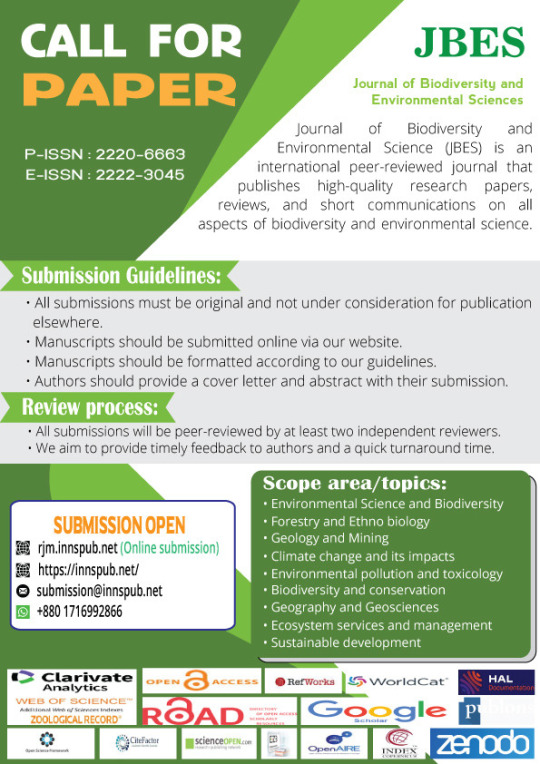
Introduction
Local societies are known to have ethnobotany knowledge that is inherited from one generation to another through word of mouth on economic, medical, ecological and cultural benefits (Hamilton, 2003) (Young, 2007) (Tamalene et al., 2016). Ethnobotany assists in explaining utilization and preservation of the plants biodiversity thus maintaining local ecological systems and culture (Reid et al., 2009).
Telfairia pedata (Smiths ex Sim) Hook (Fig. 1), is Cucurbitaceae family from a small genus of flowering plant which is native in Tanzania including Zanzibar Island and other countries of Africa including Uganda and northern Mozambique (I. A. Ajayi et al., 2004)(Aregheore, 2012). It is also well known by its local names in regions of Kilimanjaro, Arusha, Tanga and Ruvuma as "mkweme", "ngoimee" or "ikwemee" and "makunguu", “nhahani” and so forth. It is a woody dioecious climber with coiled tendrils which bears squash like fruits containing nutritious oil seeds and grows well in well drained loamy soils (Van der Vossen & Mkamilo, 2007), Fig. 1. The plant is a facultative perennial which is grown in slightly shaded and mulched areas but not damp soils and also creeps on host trees, live hedges or staked on wooden framework (Ajibade et al., 2006; Grubben, 2008; Paul & Yavitt, 2011). T. pedata nuts are rich in oil content, fat, protein, polyunsaturated fatty acids, monounsaturated fatty acids, minerals including magnesium, phosphorous (Akoroda, 1990b; Mwakasege et al., 2021).
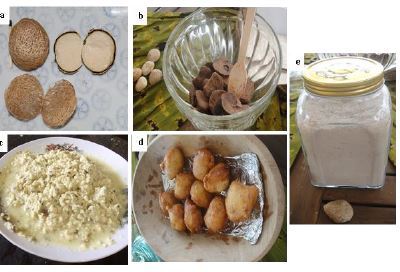
In Tanzania, ethnobotanical facets and uses of T. pedata have not yet been adequately documented specially in terms of local people’s livelihoods, how it used, cultivated, marketed, preserved and its conservation measures. Among local plants long used by the Pare, Chagga, Sambaa, and Meru tribes, the T. pedata is one which is harvested from the home gardens and agroforestry systems (trees mixed with annual crops) as a source of food, for cultural rituals and medicine. In these communities, traditional knowledge about T. pedata has been passed down and applied for generations (Ajayi et al., 2004; Odiaka et al., 2008).
Therefore, this study aims at documenting and collating knowledge on the indigenous uses of T. pedata nuts and its cultivation practices in order to support the consumption and utilization of the plant in a sustainable manner, while providing benefits to the local communities through conservation of traditional knowledge. We examined the ethnobotany of T. pedata in northern Tanzania with the expectations that, the socio-demographic characteristic on T. pedata differ across the study sites; there were different ethnobotanical uses of T. pedata across the study area; areas where T. pedata were cultivated differ across study area with gender; perception of abundance of T. pedata differ across the study area and T. pedata nuts were stored in different methods across the sturdy area.
Source : Ethnobotany of Oyster nut (Telfairia pedata) in Northern Tanzania
3 notes
·
View notes
Text

Mamlaka ya Hali ya Hewa Tanzania (TMA), imetabiri mvua kubwa kwa siku mbili kuanzia leo Novemba 30 na Desemba mosi, mikoa 11 kwenye kanda tatu tofauti.
Utabiri huo, mbali na mikoa ya Nyanda za Juu Kusini (Mbeya, Songwe, Iringa, Njombe na Rukwa), umegusa ukanda wa Pwani ya Kusini mwa Bahari ya Hindi (Lindi na Mtwara), Kanda ya Kati (Dodoma na Singida) na Kanda ya Kusini mkoa wa Ruvuma na Mkoa wa Morogoro.
Kwa mujibu wa utabiri huo uliotolewa leo Ijumaa Novemba 29, 2024, TMA imeeleza matarajio ya hali mbaya ya hewa kwa siku tano kuanzia Novemba 30 hadi Jumamosi hadi Desemba 3, 2024.
“Angalizo la mvua kubwa kwa maeneo machache ya Nyanda za juu Kusini Magharibi mikoa ya Mbeya, Iringa, Njombe, Rukwa na Songwe, Ukanda wa Pwani ya Kusini mwa bahari ya Hindi mikoa ya Lindi na Mtwara, Kanda ya Kati mikoa ya Dodoma na Singida na Kanda ya Kusini (mkoa wa Ruvuma) na mkoa wa Morogoro,” imesema taarifa ya TMA.
Pia katika utabiri huo siku ya Desemba mosi kutakuwa na mvua kwa maeneo machache ya Nyanda za juu, Kusini Magharibi mikoa ya Mbeya, Iringa, Njombe, Rukwa na Songwe, Ukanda wa Pwani ya Kaskazini mwa Bahari ya Hindi.
Soma zaidi kwenye tovuti ya Mwananchi.
#frontlinetv
0 notes
Text
FAHAMU KUHUSU KILIMO BORA CHA PILIPILI HOHO
Hapa nchini zao hili hulimwa katika mikoa ya Iringa, Tanga (Lushoto), Mbeya, Ruvuma, Tabora na Arusha.
Hoho hutumika katika kutengeneza rangi za asili za vyakula ambazo kwa sasa hupendwa zaidi kuliko zile zinazotokana na kemikali na pia huongeza ladha na harufu katika vyakula.
Hivyo hutumika katika viwanda vya kusindika vyakula, kwa mapishi ya nyumbani na hata katika viwanda vya vipodozi kama rangi ya mdomo, uso n.k. Ina virutubisho muhimu vinavyohitajika mwilini kama madini ya chuma, vitamin A na C.
Kwenye upandaji wa pilipili hoho, Mbegu huoteshwa na kukuzwa kitaluni kwa muda wa wiki 6-8 na miche hupandikizwa shambani ikiwa na urefu wa sm.6-10.
Panda shambani kwa nafasi ya sm.75-90 kati ya miche kwa sm.90-105 kati ya mistari, wastani wa miche 12,500 itapatikana kwa hekta.
Weka samadi shambani tani 25-37 kwa hekta wiki 1-2 kabla ya kupandikiza miche, au kilo 560-670 za NPK (mbolea ya viwandani) kwa hekta kwa uwiano wa 4:7:7 katika udongo usio na rutuba ya kutosha.
Matunda ya kwanza huwa tayari kuvunwa kuanzia miezi 2-3 baada ya kupandikizwa; matunda yaliyokomaa vizuri na kuwa na rangi nyekundu ndiyo huvunwa na mche mmoja huzaa Matunda 30-80.
Ubora wa hoho huongezeka kutegemeana na kiwango cha rangi yake ikiwa ni nyekundu njano au kijani.
Mazao kiasi cha tani 3.5 kwa hekta hupatikana. Baada ya kuvuna mwagilia maji, piga dawa (kama ni muhimu) na weka mbolea kuongeza uzalishaji unaofuata.
Hoho huuzwa ikiwa bado fresh tofauti na jamii nyingine za pilipili ambazo zinaweza kukaushwa na kusindikwa kasha kuuzwa baadae.
#kilimochahoho #kilimochapilipilihoho #hoho #pilipili #pilipilihoho #hohozanjano #hohonyekundu #hohozakijani #hohozakisasa #sokolapilipilihoho
Office zetu zipo @tegetawazohill - Barabara ya kwenda kiwanda cha twigacement, opposite na kota za kiwanda - Dar es salaam, Kwa wanaohitaji bidhaa zetu au huduma yoyote fika ofisini au wasilina nasi
Simu:
+255 714 63 63 75/(WhatsApp)
+255 692 43 02 63
Email:
#joackcompany #joackvetcenter #mifugo #mifugotz #kilimo #kilimotz #tanzania #dodoma #daressalaam #morogoro #tanzania🇹🇿 #dukaladawazamifugo #madawayamifugo #mwanza #mbeya

0 notes
Text
The Best Tea Leaves From Africa
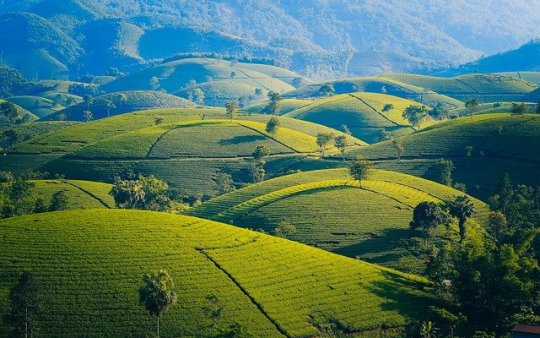
Tanzania is the largest country in East Africa aligned east coast of the Indian ocean with the best collections of agro-productions from Africa. The country is named after the astonishing union of two states; Tanganyika (Mainland) and Zanzibar (Island) to form Tanzania. Mwalimu Julius Kambarage Nyerere and Abed Amani Karume are well remembered as the ancestors of the states since they agreed to form a permanent union. It happened on 26th April 1964. The country is shielded by water bodies almost everywhere. These include Lake Victoria, Lake Tanganyika, Lake Nyasa, Lake Manyara, and others.
As it is not enough, the country has a number of rivers that make the country almost green throughout the year. These include rivers Rufiji, Great Ruaha, Pangani, Malagarasi, Wami, Ruvuma, Mara, Kagera, Ruvu, Kilombero, Tarangire, Ruvuvu, Manonga, Umba, and many others.
Tanzania has also a number of mountains and high hills in some areas to make the wonderful territory well organized. The presence of mountains Kilimanjaro, Meru, Usambara, Ol Donyo Lengai, Udzungwa, Hanang, Loleza, Kipenere, Longido and others impact the suitable agricultural climatic condition.
The country has a lot of wonders, national parks, game reserves, and much more to witness. Zanzibar herself is the place where everyone wishes to visit and see the beauty of the Island. Tanzania has a warm, tropical climate, with seasonal patterns of rainfalls. Some of the countries have a single wet and dry season, whereas other regions have two distinct rainy seasons.
The Best Tea Collections from Tanzania
Tanzania is one of the most important tea-producing countries in Africa, and also boundaries Kenya and Malawi, the two other major African tea-growing states. Most of Tanzania’s teas simply called ‘Chai’ in Swahili is exported in bulk as raw products. This situation makes Tanzania not much visible in tea production. Most of the raw tea products which are sold in Europe are sourced from Tanzania.
Some major tea companies in Tanzania have taken steps ahead for the quality of their products. These are Chai Bora and Afri Tea & Coffee Blenders. They have made a great change by sourcing, blending, and branding tea products. Simply, the best tea production from Africa is dominated by Tanzania but the major issue is branding challenges that have made them invisible to the World. The good thing is, the best tea leaves collections of their products are well-sorted and presented by Fumbalo Online Store. This is an online shop that sells tea and coffee products from Tanzania.
Tea was first cultivated under German colonists in 1902 on a very small scale to be used by colonizers. In the 1920s commercial farming of tea began under British authority.
After Tanzania was granted independence from Britain, her new government put under public sectors most of the tea factories and some tea estates. This decision had very bad significances on the tea industry in Tanzania. The government decided to handle the production into the private sector as a rescue mission.
Currently, local companies blend tea products that can compete with any brand of products around the World. They produce bold, well-twisted leaves, in shades of olive green, produce a yellow jade liquor with a bright, broth aroma. A product with refreshing character is well balanced with a rich buttery mouth feel and sweet hay notes. The finished product is clean and satisfying to anyone who tastes the product for the first time.
These companies blend a collection of tea products such as black tea, green tea, and other indigenous products mixed with spices such as ginger, camomile, cardamom, cinnamon, hibiscus, clove, lemongrass, vanilla, and others to ensure the aroma and refreshing products. All these raw products are naturally produced in the country to make the best tea production from Africa brand.
Actually, the companies are able to deliver the best tea production from Africa available in Tanzania. Tea from Tanzania is largely sourced from five main areas. These are Kagera, Tanga, Iringa, Mbeya, and Njombe regions. The regions have climatic conditions that favour the growth of tea.
How to Process Tea from the farm to the cup?
Most areas in the country have the same way of processing tea since they all grow the best tea production from Africa. Tea leaves are harvested from farms mostly by women. They use their hands to pick a few fresh and new leaves on top of plants and put them into their baskets made by using bamboo trees. The collected tea leaves are transported from the farm to the industries within a short time before they wear out or lose their natural state. Most of the time harvesting activity is done during the morning.
Some processes are conducted in the industries to produce a perfect product of tea leaves. These include withering, bruising (for black tea), twisting, oxidation, roasting, frying or boiling, and finally drying to reduce moisture and increase shelf life. In the end, the product is paced into various packages ready for sale.
The following are some of the products of black tea blend you may need to try:
o Kilimanjaro Tea Premium Blend
o Kilimanjaro Tea English Breakfast
o African Pride Tea Luxury Blend
o African Pride Chai Masala
o Chai Bora Premium Tea Blend
o Chai Bora Supreme Tea Blend
o Chai Bora Luxury Tea Blend
o Chai Bora Organic Highlands Black tea
Teas are a generator of wealth and employment in rural areas and support the well-being of over 100,000 families in Tanzania. The product is highly sold in the UK, European countries, Asian and American Markets. Are you looking for the best tea from Africa? Tanzania is among the producers of the best tea from Africa. For that reason, Fumbalo Store is not selling just tea. We are selling the best tea products from Africa. For every single dollar, you spend by buying tea products from Tanzania, you help over 100,000 families to live their lives and survive. You may not be able to donate for them, then just by this tea from Tanzania and you are also helping them.
2 notes
·
View notes
Text
In some open pit coal mine, around 30-50% stones and gangue is mixed during coal mining, so that removing stone & gangue from raw coal is the first work to do before coal beneficiation,intelligent FGX12 dry coal separator can remove around 98% gangue & stone or more, the clean coal content in reject is 2%.
1. Our customers can choose to sell clean coal directly or supply to power plant to make great economic benefit,this is worthy of investment for low rank coal.
2. Some customers will feed clean coal to coal washing preparation plant for further processing.
Sharply reduce water & processing cost,save transportation cost. Pre-preparation of coal, reduce un-efficient processing of materials, capacity of raw coal washery is reduced, reduce abrasion of equipments.
Please click this linkage for more infor of dry coal separation:
Whatsapp:+8613730503881
#tangshan diro technology#dirofx#fgx drycoal separator#dry air separator#dry coal prep#coal#dry coal vibrating separator#dry coal separation#air jig separator#coal dry separator#dry coal sorting machine#fgx#fgxseptech#dry coal separations#diro dry coal separator#fgx-12#fgx-12 dry coal separator#composite dry coal separator#compound dry coal separator#dry coal processing#dry coal washing#coal separation#Ruvuma Coal#Tancoal#Milcoal#Jitegemee#chekanaye#bico#dry coal beneficiation#Tanzania coal
1 note
·
View note
Photo
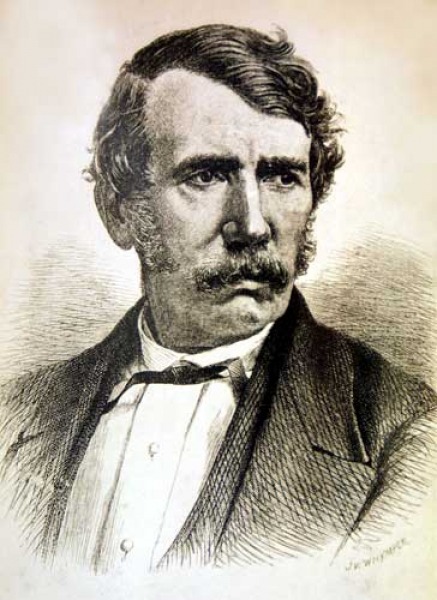
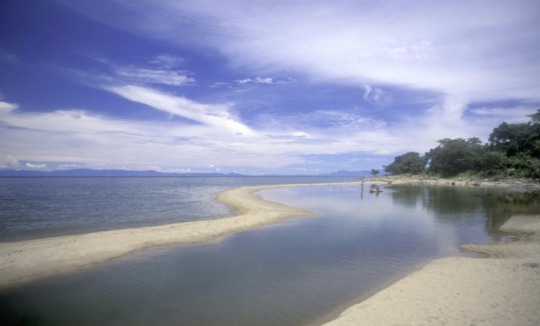
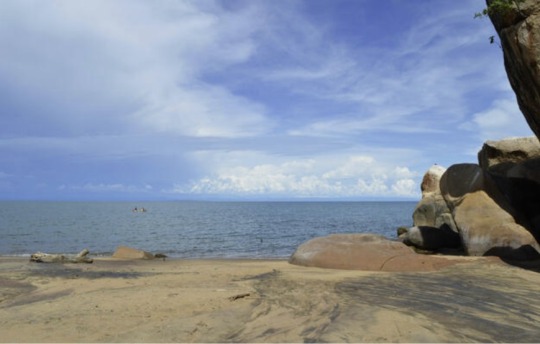
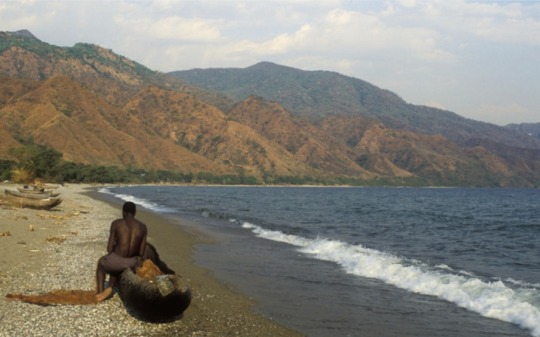
September 16th 1859 saw David Livingstone “discover” Lake Nyasa.
Lake Nyasa, also called Lake Malawi, lake, southernmost and third largest of the Eastern Rift Valley lakes of East Africa, which lies in a deep trough mainly within Malawi. The existence of the lake was reported by a Portuguese explorer, Caspar Boccaro, in 1616. David Livingstone, explorer-missionary, reached it from the south in 1859 so I’m not really sure why it has been said Livingstone even “discovered” it but there you go.
The exploration that culminated in the finding of Lake Nyasa happened when the government agreed to support an expedition to explore the Zambezi River led by Livingstone, who was made a consul for the purpose. He sailed for Africa in March 1858.
The Zambezi expedition met with many difficulties. It was marred by friction among the Europeans, mainly caused by Livingstone’s brother Charles. The steam launch Ma Robert proved unsuitable, and the Kebrabasa Rapids killed the dream of Zambezi as an inland waterway. The Ma Robert was taken into the Shire River but was blocked by the Murchison Falls.
The explorers learned of the existence of two lakes to the north, and on a second journey they discovered Lake Chilwa on April 16, 1859. On a third journey up the Shire they left the boat, walked 3 weeks overland, and discovered Lake Nyasa on Sept. 16, 1859. A new steamer, the Pioneer, arrived in 1861, by which they explored the Ruvuma River in an effort to bypass the Portuguese. Later they managed to get the Pioneer to Lake Nyasa, which they explored but did not circumnavigate.
In January 1862 a third boat, the Lady Nyassa, arrived together with Mrs. Livingstone, giving him fresh hope. But Mary Livingstone died from fever at the end of April. The Lady Nyassa never reached the lake, and finally the government recalled the expedition.
The Malawi city of Blantyre was founded near Lake Nyasa, Livingstone used the native names for the places he encountered on his travels, although at the time he had no way of knowing that Nyasa simply meant Lake, so it is Lake Lake! Lake Nyasa (also known as Lake Malawi), is vast. It is the ordinal maximal lake in the domain and lies between the countries of Malawi on the writer and Tanzania and Mozambique on the eastward side. It is 360 miles in length (thats like stretching from Blantyre in Scotland to London, England!) and 25 miles wide, with an rough expanse of 8,683 sq mi, and reaches depths of 2,300 feet.
It certainly looks beautiful!
21 notes
·
View notes
Quote
Mkuu wa Tawi la Utawala Jeshi la Kujenga Taifa (JKT) Kanali Julius Kadawi akitoa taarifa kuhusu kujiunga na mafunzo ya JKT mujibu wa sheria mwaka 2020 kwa vijana waliohitimu kidato cha sita katika shule za Tanzania Bara, Taarifa hiyo ameitoa leo Makao Makuu ya Jeshi hilo Wilayani Chamwino Mkoani Dodoma Julai 16, 2020. ............................... Na Mwandishi Wetu- Dodoma Jeshi la Kujenga Taifa (JKT) limetangaza majina ya vijana waliohitimu kidato cha sita kutoka shule zote za Tanzania Bara waliochagulwa kujiunga na mafunzo ya Jeshi hilo kwa mujibu wa sheria ya mwaka 2020 . Akizungumza leo Julai 16, 2020 Makao Makuu ya Jeshi hilo Wilayani Chamwino Mkoani Dodoma, Mkuu wa Tawi la Utawala, Jeshi la Kujenga Taifa (JKT) Kanali Julius Kadawi amesema kuwa Mkuu wa JKT Meja Jenerali Charles Mbuge anawakaribisha waliochaguliwa kujiunga na vijana wenzao katika kujifunza uzalendo, umoja wa kitaifa, stadi za kazi, stadi za maisha , utayari wa kulijenga na kulitumikia Taifa kupitia mafunzo hayo. “Orodha kamili ya majina ya vijana waliochaguliwa, maeneo ya makambi ya JKT waliyopangiwa na vifaa wanavyotakiwa kwenda navyo inapatikana katika tovuti ya JKT ambayo ni www.jkt.go.tz”, Alisisitiza Kanali Kadawi Aidha, Kanali Kadawi amesema kuwa vijana hao wanatakiwa kuripoti makambini kuanzia tarehe 24 hadi 27 Julai, 2020 ambapo mafunzo yatafunguliwa rasmi Agosti 1, 2020. Akifafanua, Kanali Kadawi amesema kuwa kwa upande wa wahitimu wenye ulemavu wa kuonekana kwa macho (Physical disabilities) wanatakiwa kuripoti katika kambi ya JKT Ruvu iliyopo Mlandizi mkoani Pwani ambayo ina miundombinu ya kuhudumia watu wa jamii hiyo. “Kutokana na Ugonjwa wa Homa kali ya Mapafu (COVID -19) nchini, Tahadhari za kuzuia maambukizi ya ugonjwa huo kama ilivyoelekezwa na Serikali kupitia Wizara ya Afya zitazingatiwa kwa kipindi chote vijana watakapokuwa katika mafunzo”, Alisisitiza Kanali Kadawi Vijana waliochaguliwa wamepangiwa katika kambi za JKT Rwamkoma- Mara, JKT Msange- Tabora, JKT Ruvu-Pwani, JKT Mpwapwa Dodoma, JKT Mafinga- Iringa, JKT Mlale-Ruvuma, JKT Mgambo na JKT Maramba- Tanga, JKT Makuyuni- Arusha, JKT Bulombora, JKT Kanembwa, JKT Mtabila- Kigoma, JKT Itaka- Songwe, JKT Luwa na JKT Milundikwa- Rukwa, JKT Nachingwea- Lindi,JKT Kibiti na Oljoro- Arusha.
http://faharinewstz.blogspot.com/2020/07/jkt-yatangaza-majina-ya-vijana.html
1 note
·
View note
Photo







Olam gehört zu den größten Agrarkonzernen der Welt. In der abgelegenden Ruvuma Region, Süd-West Tansania 🇹🇿, betreibt die Konzerntochter AVIV eine Kaffeeplantage. Auf etwa 2000 Hektar wird seit 2011 Kaffee für den Export angebaut. Zur Bewässerung wurde eigens ein eigener Damm mit Stausee errichtet. Doch welche Auswirkungen hat diese industrielle Landwirtschaft auf die Menschen vor Ort? Ein Konzern als Retter in der Not?
Fortsetzung folgt...
https://www.facebook.com/AfricAgrarian/
https://www.instagram.com/_africagrarian/
#tanzania#africa#eastafrica#ostafrika#tansania#afrique#olam#aviv#arighttofoodperspective#foodsecurity#peasant#smallholders#smallscale#largescalefarming#ruvuma#songea#coffee#greencoffeebeans#vivaconagua#irrigationsystem#RURAL DEVELOPMENT#rural#sustainable agriculture#agriculture
0 notes
Photo

If we live to die.. Imma make it worth the ride!!! #WhenBamboTravels #ProgressingProject #TravelJournal #Tanzania #Ruvuma #Songea (at Msamala)
0 notes
Text
FAHAMU KUHUSU KILIMO CHA ALIZETI - TANZANIA | FURSA YA KILIMO CHA ALIZETI TANZANIA
Call/Text/WhatsApp: +255 714 63 63 75
@joackcompany @mifugo_tz @kilimo_tz @afyakiganjani @joackagrovet @joackanimalclinic @joackbagamoyo
Ofisi zetu za zipo Tegeta-Wazohill Dar es salaam na Bagamoyo
Masaa yetu ya kazi ni kila siku saa 1 Asubuhi hadi saa 5 Usiku.
Alizeti hulimwa kwa wingi karibu maeneo yote nchini Tanzania katika nyanda za kaskazini, kati, mashariki pamoja na nyanda za juu kusini hasa katika mikoa ya:-
Shinyanga, Singida, Dodoma, Iringa, Tabora, Morogoro, Ruvuma, Mbeya, Arusha, Manyara na Rukwa
Hii inatokana na uwezo wa alizeti kustawi vizuri katika mazingira mengi tofauti bila ya kuwa na utofauti mkubwa katika uzalishaji wake.
Ukubwa wa ua la alizeti (kichwa) huanzia sm 15 hadi 30 na dani yake huwa na mkusanyiko wa maua madogo madogo yanayokaa kwa pamoja kama duara juu ya kombe kubwa ambapo kichwa kimoja kina kadiliwa kuwa na maua madogo 800 hadi 3000 na kila ua dogo moja lina uwezo wa kutengeneza mbegu.
Mbegu za alizeti huanza kutengenezwa katika kichwa kuanzia siku 10 hadi 15 tangu kutoka kwa maua.
Zao la Alizeti hulimwa kwa ajili ya matumizi mbalimbali ambapo baadhi yake ni kama vile kutengeneza mafuta, kulishia mifugo na matumizi ya viwandani.
Ukihitaji mbegu bora ya alizet wasiliana nasi JOACK Company LTD.
#alizeti #kilimochaalizeti #mbeguzaalizeti #mafutayaalizeti #shambalaalizeti #sunflower #mashambayaalizeti #sokolaalizeti #mafutayakupikia
Office zetu zipo @tegetawazohill -Barabara ya kwenda kiwanda cha twigacement, opposite na kota za kiwanda - Dar es salaam, Kwa wanaohitaji bidhaa zetu au huduma yoyote fika ofisini au wasilina nasi kwa
Simu:
+255 714 63 63 75 (WhatsApp)
+255 692 43 02 63
Email:
YouTube: https://youtu.be/UxLyLqHtfnw
Website link: https://joackcompany.business.site/
Google location: https://maps.app.goo.gl/C2XiH7ppmYe6pq7Q9
#joackcompany #joackvetcenter #mbogamboga #nyanya #mifugotz #mifugo #mbogamboga #mbegu #kilimo #kilimotz #greenhouse #dripirrigation #shamba #tanzania #daressalaam #dodoma#tanzania🇹🇿 #dodoma
JOACK Company LTD | DSM & Bagamoyo

0 notes
Text
Solo Oil raises £2M to fund Tanzania's Ntorya 2 well testing
Solo Oil raises £2M to fund Tanzania’s Ntorya 2 well testing
Solo Oil has announced that the company has raised £2,000,000 (before expenses) through a Company sponsored placing.
The net proceeds from the Placing will be used to fund the Company’s share of the imminent well testing programme for the recently drilled Ntorya-2 appraisal in Tanzania and the analysis of future development options for the Ntorya discovery, where Aminex plc is the operator.
“The…
View On WordPress
#Aminex#discovery#funding#Ntorya#Ntorya 2#placement#Ruvuma Petroleum Sharing Agreement#Tanzania#well testing
1 note
·
View note
Text
Tourists Information Centers Are Established In Tanzania
Regional Commissioner Colonel Laben Thomas of RUVUMA has given instructions to executive directors of the district that tourism information centers should be opened in their respective areas with the aim to promoting the tourism sites available in the region.

The Regional Secretary would be given the responsibility to build the main center at the regional’s office in order to provide information and news to local tourists and foreign on various aspects such as historical, cultural, and other tourism products across the region.
Col Thomas further stated that district executives have to come up with a planned development approach in order to promote domestic tourism, which in turn helps increase the economic growth of the region.
Col. Thomas issued the order over the weekend when launching tourism operations on Lundo Island in the Nyasa District of the Ruvuma Region.
The occasion coincided with the transfer of Tumbi, Mbamba, and the Lundo and Mbambabay Islands to the Tanzania Wildlife Management Authority (TAWA) for the purpose of their conservation.
This event was organized in order to hand over Lundo and Mbambabay Islands, Tumbi and Mbamba to Tanzania Wildlife Management Authority (TAWA), for the areas to be conserved.
0 notes
Photo

Facet Rough Purple Spinel from Tunduru. Total weight around 3.5 grams: 1 + 1 + 1.5 grams. Pm to inquiry. (à Tunduru, Ruvuma, Tanzania) https://www.instagram.com/p/CnBwuiBIC4g/?igshid=NGJjMDIxMWI=
0 notes
Photo




September 16th 1859 saw David Livingstone "discover" Lake Nyasa.
I say discover but the lake was always there, like other places that have been "discovered" in history, they were merely the first white Europeans to come across them, or at very least to map them.
Lake Nyasa, also called Lake Malawi, lake, southernmost and third largest of the Eastern Rift Valley lakes of East Africa, which lies in a deep trough mainly within Malawi. The existence of the lake was reported by a Portuguese explorer, Caspar Boccaro, in 1616. David Livingstone, explorer-missionary, reached it from the south in 1859 so I'm not really sure why it has been said Livingstone even "discovered" it but there you go.
The exploration that culminated in the finding of Lake Nyasa happened when the government agreed to support an expedition to explore the Zambezi River led by Livingstone, who was made a consul for the purpose. He sailed for Africa in March 1858. The Zambezi expedition met with many difficulties. It was marred by friction among the Europeans, mainly caused by Livingstone's brother Charles. Their transport, the steam launch Ma Robert proved unsuitable, and the Kebrabasa Rapids killed the dream of Zambezi as an inland waterway. The Ma Robert was taken into the Shire River but was blocked by the Murchison Falls.
The explorers learned of the existence of two lakes to the north, and on a second journey they discovered Lake Chilwa on April 16th, 1859. On a third journey up the Shire they left the boat, walked for 3 weeks overland, and discovered Lake Nyasa on Sept. 16, 1859. A new steamer, the Pioneer, arrived in 1861, by which they explored the Ruvuma River in an effort to bypass the Portuguese. Later they managed to get the Pioneer to Lake Nyasa, which they explored but did not circumnavigate. In January 1862 a third boat, the Lady Nyassa, arrived together with Mrs. Livingstone, giving him fresh hope. But Mary Livingstone died from fever at the end of April. The Lady Nyassa never reached the lake, and finally the government recalled the expedition.
The Malawi city of Blantyre was founded near Lake Nyasa, Livingstone used the native names for the places he encountered on his travels, although at the time he had no way of knowing that Nyasa simply meant Lake, so it is Lake Lake! Lake Nyasa, is vast and lies between the countries of Malawi on the writer and Tanzania and Mozambique on the eastward side. It is 360 miles in length (thats like stretching from Blantyre in Scotland to London!) and 25 miles wide, with an rough expanse of 8,683 sq mi, and reaches depths of 2,300 feet.
It certainly looks beautiful! You can find out more about David Livingstone and the original Blantyre in Lanarkshire on their web page here https://blantyreproject.com/
19 notes
·
View notes
Text
Forest Program Officer at WWF
Forest Program Officer at WWF
Job Description Vacancy: Forest Program Officer BACKGROUND: WWF (World Wide Fund for Nature) Tanzania is seeking for a competent and motivated Forest Program Officer (FPO) to be in-charge and Forest Program representative for all forest management activities within the Ruvuma landscape and provide technical support to other WWF priority landscapes when a need arises to be based in Kilwa,…

View On WordPress
0 notes